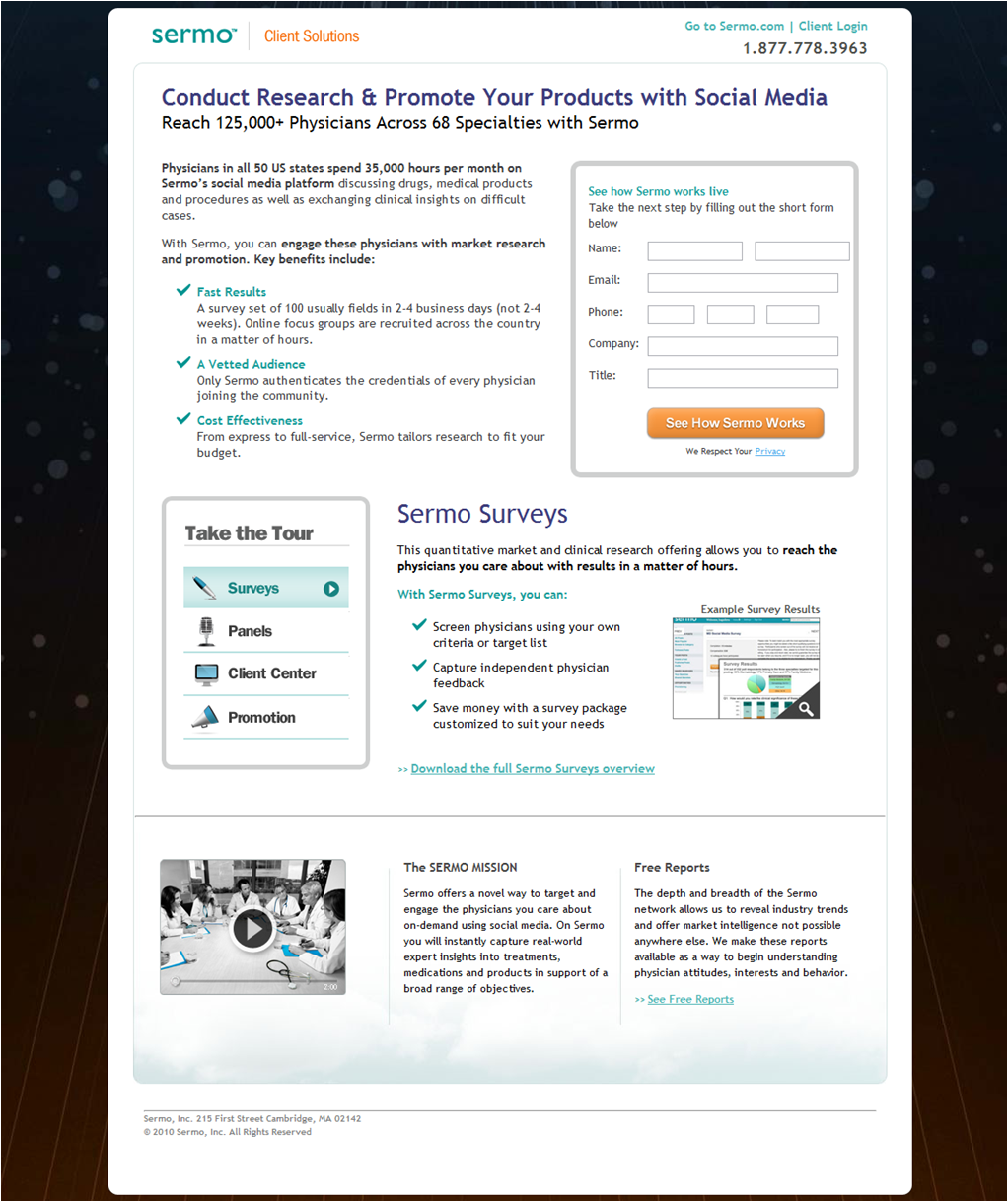When I think of microsites, I think of the film “Star Wars.” I imagine an organization’s main homepage as the giant Star Destroyer and the microsites as TIE fighters, piloted by the most talented marketers in the galaxy.
A microsite presents marketers with the opportunity to exert more control over the elements on a homepage than they normally would have on an organization’s main homepage. A benefit of having increased control is the potential for increased testing opportunities, pending the traffic to your site and testing budget allows.
One of MECLABS’ Research Partners, Sermo, a social media site that offers membership exclusively to physicians, faced the challenge of getting their traffic and testing balance just right while encountering difficulties in converting higher-quality leads.
To solve the lead generation problem, the MECLABS research team ran a test on the Sermo microsite to determine which microsite would achieve the greatest number of qualified leads.
Control Page:
Here is the control page for the SERMO microsite.

Treatment Page:

For the treatment, a product tour was created, which gave visitors an overview of the site that demonstrated the value of the site as a new way for physicians to present and exchange their research. A free report was included in exchange for contact information.
Results:
The treatment page outperformed the control page by a relative difference of 154.7% at a 95% level of confidence, producing more qualified leads.
Based on those results, here are three quick takeaway lessons to help you with your own microsite tests:
Value Proposition
Your value proposition answers the question, “If I am your ideal prospect, why should I buy from you?” In Sermo’s case, including a tour of the site and a product overview on the treatment page provided the clarity to the value proposition that the higher-quality leads needed.
In a recent Web clinic on “Discovering Your Value Proposition,” Dr. Flint McGlaughlin, CEO and Managing Director, MECLABS, emphasized that, “In serving an ideal prospect you are not serving everyone, you are serving a segment of prospects, and you have got to understand that segment,” Flint said.
Call-to-action
Increasing the clarity in your call-to-action will not leave your visitors wondering about the next step. By changing the call-to action button from “Learn more” to “See how Sermo works,” the new call-to-action provided visitors with a preview of the value they can expect if they act.
Reduce Exit Links
When I asked Adam Lapp, Associate Director of Optimization, MECLABS, about reducing the chances for a visitor to exit by removing exit links on a landing page, he introduced an interesting point about the common misconception about exit links.
“The idea of exit links is not exclusive to just removing links on a page,” Adam said. “No one optimizes links on a page, they optimize thought sequences.”
Adam explained further that optimization begins by understanding the objective of a page and removing elements that interfere with the prospects thought sequence or distract from the objective of the page.
Related Resources:
Optimizing Calls-to-action: 4 questions to ask yourself while writing a CTA
Homepage Optimization: Free trial vs. Demo
Customer Value: The 4 essential levels of value propositions




